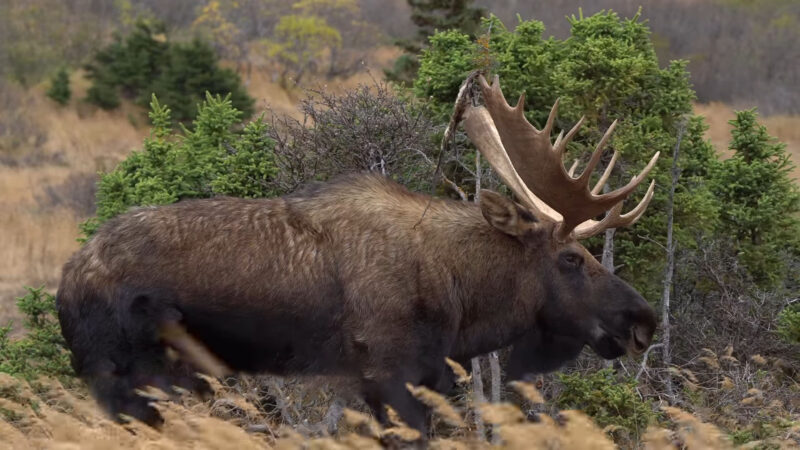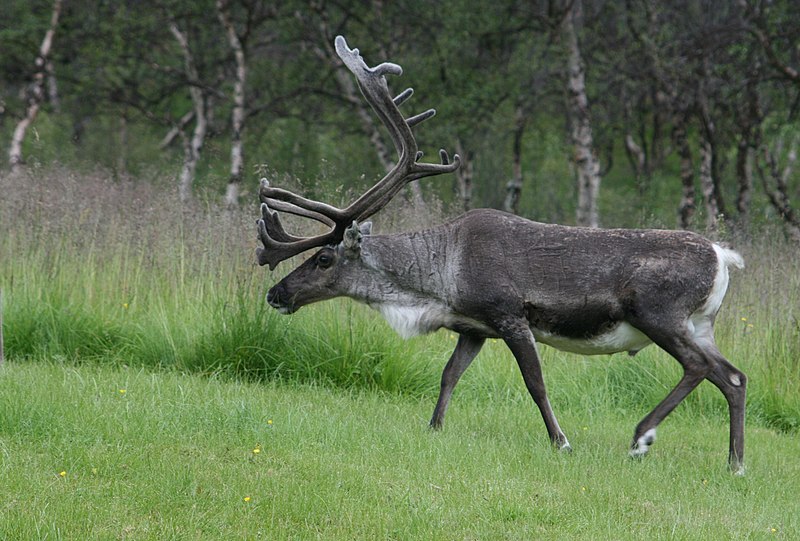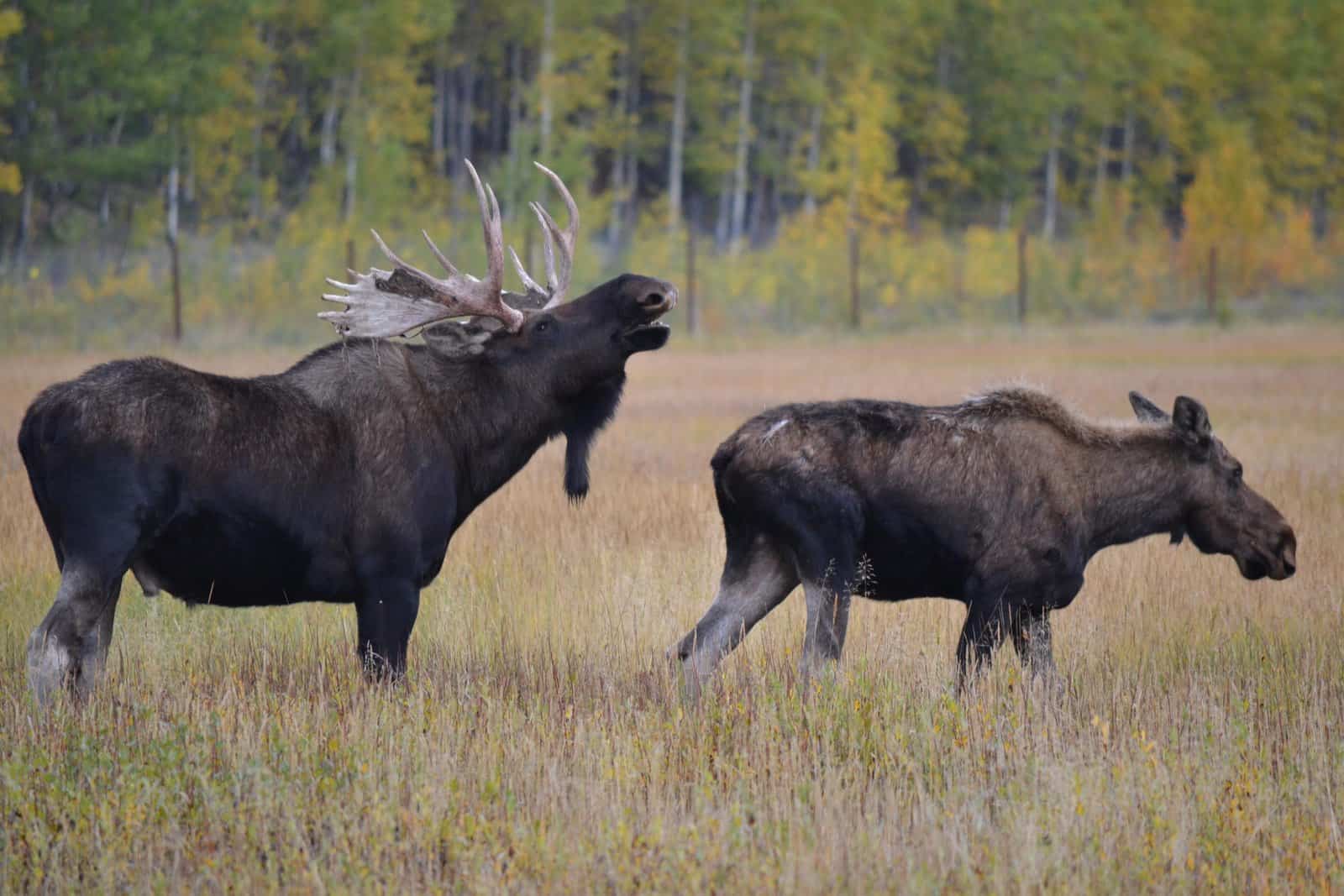Moose cows do not have antlers. Only male moose, known as bulls, grow antlers.
In the moose species, antlers are a feature exclusive to males for purposes such as dominance and mating displays. The majestic moose, often associated with the wilderness of North America, is a fascinating mammal known for its impressive size and distinctive antlers.
While male moose typically sport these characteristic antlers, there is often confusion about whether moose cows, or females, also possess them. This article will delve into the intriguing world of moose biology, shedding light on the differences between male and female moose and exploring the unique features that make this species truly remarkable. Let’s explore the world of moose and uncover the mysteries surrounding their impressive antlers!
The Anatomy Of Moose Cows
Physical Characteristics
Moose cows, or female moose, are known for their impressive size and stature. They can weigh up to 1,200 pounds and stand as tall as 6.5 feet at the shoulder.
With a distinctive bulbous nose and a long, pendulous dewlap under their throat, moose cows are easily recognizable in the wild.
Growth And Development
Moose cows undergo rapid growth in their early years, reaching maturity around two years old.
They experience annual reproductive cycles, giving birth to one or two calves each spring after a gestation period of around 8 months.

Credit: www.nationalgeographic.com
Understanding Moose Antlers
Moose are fascinating creatures, and one of the most striking features about them is their antlers. Antlers play a crucial role in a moose’s life, and understanding them is essential to appreciating these majestic animals.
Antler Formation Process
Antlers grow rapidly on male moose, starting as small bumps covered in velvet that nourishes the antlers with blood vessels. The velvet eventually sheds revealing the hardened antlers underneath.
Function Of Antlers
Antlers serve various purposes for moose, including attracting mates during mating season, establishing dominance through displays, and defense against predators. They are a vital part of the moose’s survival and reproduction.
Moose Cows And Antlers
Moose cows and antlers are a subject of curiosity and confusion for many people. While it’s commonly known that male moose, known as bulls, have antlers, the question of whether moose cows also possess antlers raises interesting questions about the species. Let’s delve into the intriguing topic of moose cows and antlers to uncover all the fascinating details.
Antler Presence In Female Moose
Contrary to popular belief, moose cows do not have antlers. Antlers are a feature exclusive to male moose, and they serve various purposes such as attracting mates and competing with other males during the mating season. The absence of antlers in female moose, also known as cows, is a characteristic that distinguishes them from their male counterparts.
Behavioral Impacts
The absence of antlers in female moose also has behavioral impacts. Without the burden of carrying antlers, cows may be more agile and have greater maneuverability, particularly during situations that require swift movement, such as escaping predators or navigating through dense vegetation. This unique characteristic plays a role in shaping the behavior and dynamics of moose cows within their natural habitat.

Credit: www.beforetheflood.com
Myths And Misconceptions
When it comes to moose cows, there are numerous myths and misconceptions that have lingered over time. Let’s debunk some of these common misunderstandings and shed light on the fascinating truth.
Common Myths
Many people believe that only male moose, also known as bulls, have antlers. However, this is a common myth. The truth is that both male and female moose can grow antlers. While antlers are more prominent in bulls, cow moose can also have antlers.
Another popular myth is that moose cows have smaller and less impressive antlers compared to bulls. But in reality, the size and shape of the antlers can vary greatly among both males and females. Factors such as age, genetics, and nutrition play a significant role in determining the size of the antlers.
Debunking Misconceptions
Contrary to popular belief, antlers are not permanent fixtures on a moose’s head. They are actually shed and regrown annually. This shedding process usually occurs during the winter and spring months for both bulls and cows. After shedding, the new set of antlers begins to grow immediately.
It is also essential to understand that antlers serve different purposes for males and females. While male moose use their antlers primarily for territorial battles and mating displays, the function of antlers in females is less understood. However, research suggests that cow moose might use their antlers for protection and defense against predators.
Additionally, it is worth noting that not all female moose grow antlers. The percentage of cows with antlers varies depending on the population and geographical location. In some areas, it is more common to find cows with antlers, while in others, it may be relatively rare.
Key takeaways:
- Male and female moose can both grow antlers, although they are more prominent in bulls.
- The size and shape of antlers can vary greatly among moose, regardless of their gender.
- Antlers are shed and regrown annually, with the shedding process occurring during winter and spring.
- While the exact function of antlers in female moose is not fully understood, they could serve for protection and defense against predators.
- The presence of antlers in female moose varies depending on the population and geographical location.
Preservation And Conservation
Preservation and conservation efforts play a crucial role in ensuring the survival of moose cows and their antlers. By understanding the significance of these majestic creatures and their role in the ecosystem, we can take steps to protect them for future generations. In this section, we will explore the various ways in which preservation and conservation efforts are making a difference.
Protection Efforts
Protection efforts are focused on safeguarding the habitats and populations of moose cows to maintain a healthy balance in nature. These efforts include:
- Creating protected areas and national parks where moose cows can thrive undisturbed.
- Implementing regulations and strict hunting policies to prevent the over-harvesting of moose cows and their antlers.
- Monitoring and managing the population growth to ensure sustainability.
Conservation Impact
Conservation initiatives have a significant impact on preserving the existence and antler growth of moose cows by:
- Funding research projects to improve our understanding of moose cows and their antlers.
- Developing educational programs to raise awareness about the importance of conserving moose cows and their habitats.
- Collaborating with local communities and indigenous groups to protect and preserve moose cow populations.
- Restoring and enhancing habitats to provide suitable environments for moose cows to thrive.
- Promoting sustainable practices in tourism and recreation to minimize the negative impact on moose cow populations.
The combined efforts of protection and conservation ensure that moose cows continue to roam our forests, gracing us with their majestic presence.

Credit: en.wikipedia.org
Frequently Asked Questions On Do Moose Cows Have Antlers
Can Female Moose Grow Antlers?
No, female moose, also known as moose cows, do not grow antlers. Only male moose grow antlers, which they shed and regrow every year.
Why Do Male Moose Grow Antlers?
Male moose grow antlers as a means of attracting females during the mating season and competing with other males for dominance.
When Do Moose Cows Give Birth?
Moose cows usually give birth in the spring, between April and June. They typically have one or two calves at a time.
How Long Do Moose Antlers Grow?
Moose antlers can grow up to six feet wide and weigh up to 40 pounds. They are one of the largest antlers among deer species.
Conclusion
Moose cows do not have antlers, as only male moose, or bulls, possess them. The presence of antlers on a moose indicates its gender, with bulls using them for competition and display during mating season. Understanding the differences between the sexes can help appreciate the unique characteristics of these majestic animals.


